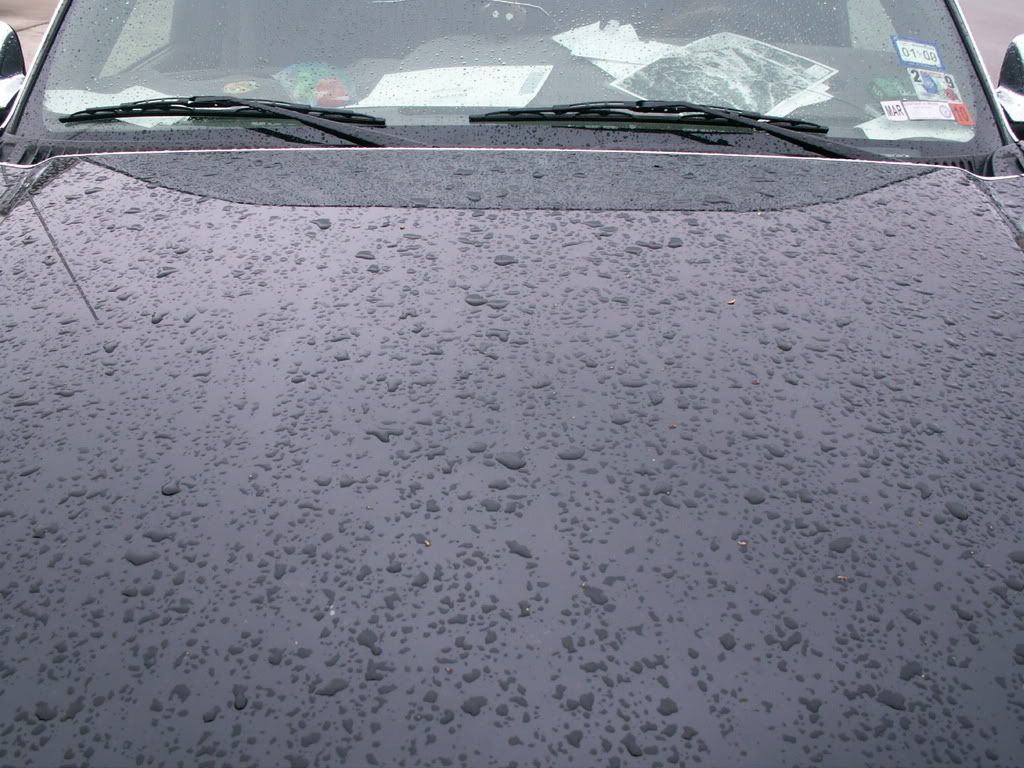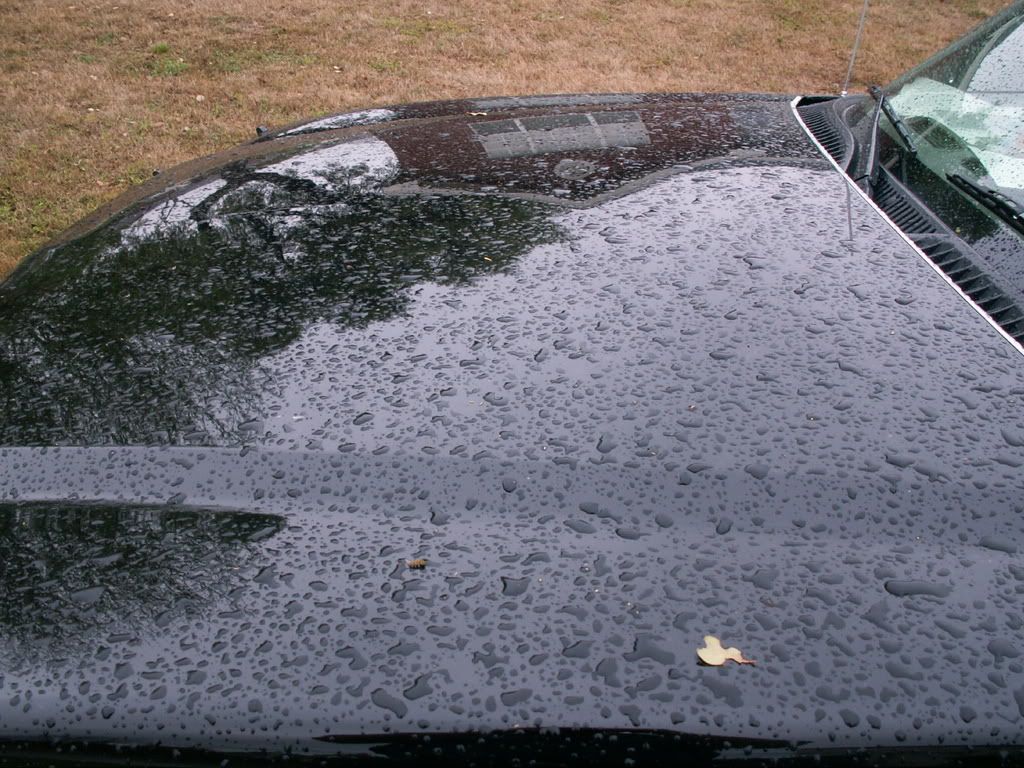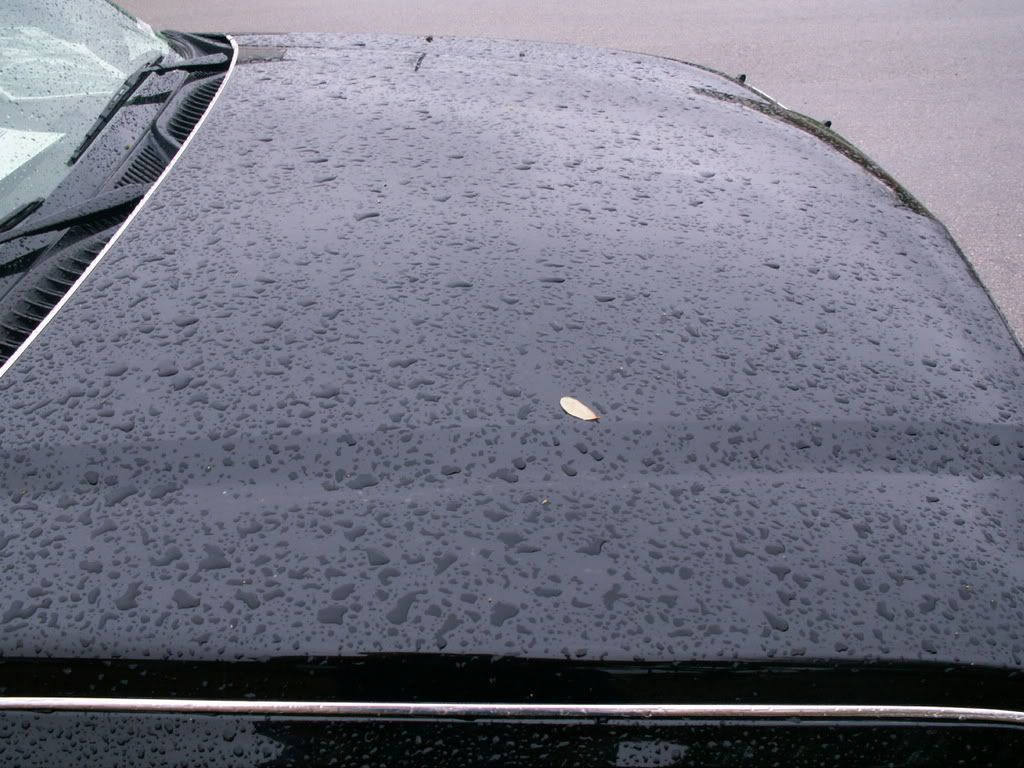My test is finally coming to a close. The beading is changing each week as you can see from my first posts. I believe that it is time for something different. I never imagined how difficult it was to not do something that would effect the testing. What ever I did during the course of the test each product was treated the same. Nothing was done to add to the products to increase shine or durability.
It appears from the pictures below that that the beading is lacking of uniformity. Although the entire hood seems to be uniform in the beading. I am comparing the beads now to the previous pictures of this thread. Look for yourself
I have to say that I am satisfied with DWG it passed the CharlesW test as far as I am concerned. What is the Charles W test? It is 4 to 6 weeks of good durabilty and shine and I cannot wait to put more product on the replenish what I believe is still doing a relatively good job.
Slickness was not a major factor in this test. The slickness dropped a little each day. I am not sure if the dust issues were the mitigating factor in this issue but I suspect it may be since I had to put the truck through some hard environmental elements because of the trips that I had to make through central Texas during the test period. Dust from the drought brought excessive wear on the test area. I had one day where it rained dust puddles on my test area. That is why I had to use a car shampoo to clean the test area rather than using S&W my usual cleaning practice.
Shine remained consistent after the first week. Eventually the hood looked the same through out the test area as compared to the initial look of the applied sealants. There definitely was a different look between the sealants as was shown in earlier posts. The difference did not last long though. As the test progressed the look became generic in shine and beading characteristics.
Here are my conclusions to my test.
DWG is a fine glaze that offers good shine and adequate protection for a moderate amount of time.
Zaino was effected by DWG. As noted by the change of the beading, slickness drop, and uniform shine on the test area.
Slickness was also noted on NXT 2.0 plus the darkening of the paint and both were soon lost after a week or two as I noted with the generic look of the test area.
Liquid Souveran probably worked the best with DWG but I suspect my opinion is skewed because of my penchant for the look of LS.
All in all it was a fun test for me and I look forward to doing similar testing with other products in the future.



